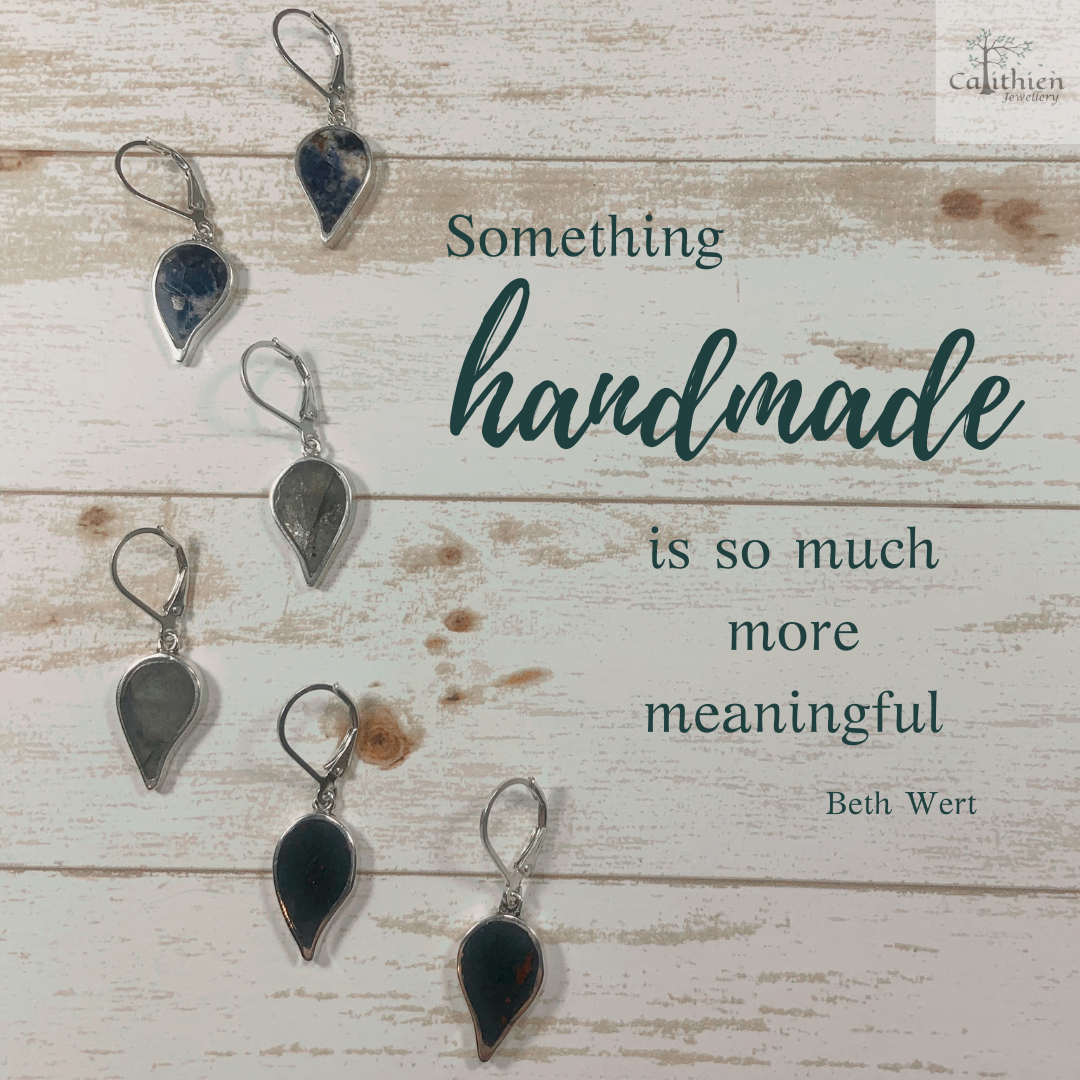
What is Obsidian?
Properties
Most gemstones are minerals. Obsidian is actually rock. It’s an igneous rock, formed by the rapid cooling of viscous lava from volcanoes, creating a naturally-occurring volcanic glass.
Because obsidian is produced during the eruption of a volcano, it rapidly goes from extremely hot to super-cooled, creating a substance that takes a high polish and has a Mohs hardness of 5 -5.5.
In its pure form, obsidian is jet black and translucent - this can be seen quite well in our obsidian Butterfly Earrings.
The highest quality obsidian is often faceted. However, like any glass, obsidian contains small bubbles that were formed during its creation. It also frequently has impurities, in the form of minerals that get mixed into the silica. These can produce beautiful colours and patterns that are best seen when it’s cut as a cabochon or similar piece.
Mahogany obsidian has brown bands that resemble woodgrain. Snowflake obsidian is flecked with spots of white or pale grey. Rainbow obsidian shows iridescent colours, while sheen obsidian displays, under the right lighting, a gold or silver sheen.
History
Obsidian is named after Obsius, a Roman man credited by Pliny the elder with discovering the stone in Ethiopia. It’s possible the name is actually due to a mis-reading of ‘obsianus lapis’ (Obsius’s stone), renaming it ‘obsidianus lapis.’ Since obsidian was in use well before Roman times, Obsius wasn’t actually the first to discover it.
In terms of gemstones with an ancient pedigree, obsidian can hold its head high. The British Museum holds almost four thousand specimens of obsidian, including an extensive collection of arrowheads excavated from sites all around the world. Obsidian has long been used to create tools, amulets, sculptures, jewellery, and even writing tablets. Some items date from Neolithic times, at least as early as 8000 BC.
One of the most famous pieces of obsidian jewelry is the Necklace of Renisenib. Made of gold and obsidian, it was recovered from an Egyptian tomb and is currently housed at the Metropolitan Museum of Art. It’s believed to have been created between 1810 and 1700 BC.
Mythology and Lore
Obsidian has long been associated with the magic and the occult. Historically, it was also seen as a strong gemstone of protection. Practitioners used it for scrying and believed it cut through illusions and to see truth. It was also valued as a stone for deep meditation and used for spiritual healing.
To today’s crystal practitioners, obsidian is also associated with pain relief, the circulatory system, and is seen as an aid to recovering addicts.
Sources
Obsidian | Igneous Rock, Composition, & Uses | Britannica
https://www.britishmuseum.org/collection/search?keyword=obsidian
Necklace of Renisenib | Middle Kingdom | The Metropolitan Museum of Art (metmuseum.org)
https://www.gemdat.org/gem-8519.html
https://www.mindat.org/min-8519.html
Natural Glass Value, Price, and Jewelry Information - International Gem Society





Leave a comment
This site is protected by hCaptcha and the hCaptcha Privacy Policy and Terms of Service apply.